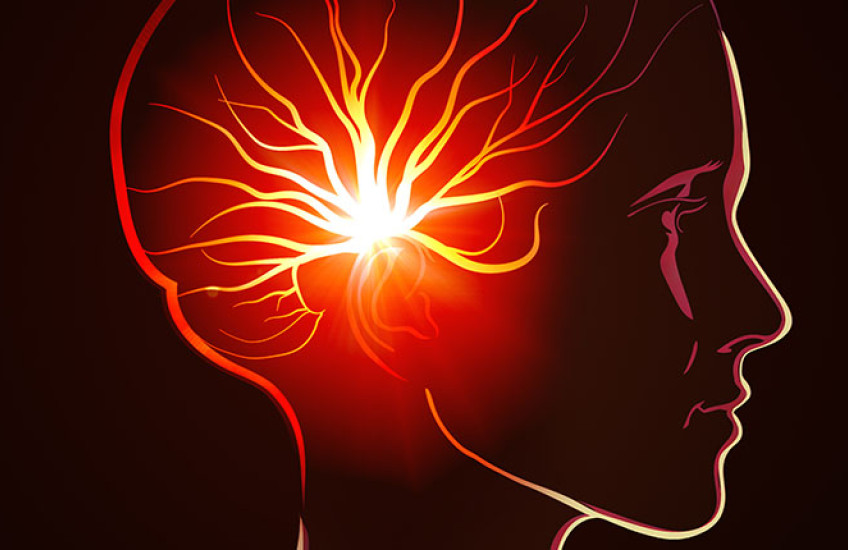At a glance
Study in mice reveals rapid release of dopamine is not needed for initiating movement but is important for activities related to reward-seeking and motivation.
The findings help explain why the widely used Parkinson’s drug levodopa improves movement-related symptoms but fails to ameliorate some cognitive ones.
The work may inform the development of new therapies that restore both slow and fast dopamine action to treat multiple symptoms.
The chemical messenger dopamine is an essential catalyst that fuels activities and behaviors ranging from movement to cognition and learning. However, neuroscientists have long debated whether these functions rely on rapid bursts of dopamine or on the neurochemical’s slower action.
A new study led by researchers at Harvard Medical School provides an answer.
The work, conducted in mice and published Oct. 16 in Nature, shows that initiating movement doesn’t require a rapid burst of dopamine but instead relies on slow activity of the chemical over time. By contrast, reward-oriented behaviors, related to motivation and learning, rely on fast dopamine action.
“If you read up on modern dopamine neuroscience, one conclusion from that body of literature is that dopamine may act as a fast neurotransmitter to trigger and modulate movement, yet our study shows that’s not the case,” said study senior author Pascal Kaeser, professor of neurobiology in the Blavatnik Institute at HMS.
The findings shed light on the molecular mechanism behind the drug levodopa (L-Dopa), widely used to treat Parkinson’s disease. A hallmark of the condition is progressively diminishing dopamine, which over time leads to tremor and stiffness as well as a range of cognitive problems, including difficulty with memory, attention, thinking, and decision-making.
The study results help explain why L-Dopa generally improves the motor symptoms in Parkinson’s, which do not require fast dopamine release, but is often worse for alleviating cognitive and memory problems, which tend to be under the control of fast dopamine signaling.
“Our work gets at the heart of the mechanism of L-Dopa action in movement. Our findings confirmed that L-Dopa enhances movement, but it does so without restoring rapid dynamics in the model we used,” said study lead author Xintong Cai, a former HMS research fellow in neurobiology.
Dopamine signaling — fast and slow
Dopamine signaling is a complex, multistep process that involves a signal-producing neuron and various signal-receiving cells. It starts when a dopamine-producing neuron is activated by an electric impulse, which triggers the release of dopamine. Dopamine molecules move outside cells and bind to receptors on the surface of signal-receiving neurons. This binding initiates a cascade of signaling processes that regulate wide-ranging activities and behaviors, from movement and reward-seeking to motivation and learning.
In the 1950s, Swedish neuroscientist Arvid Carlsson discovered dopamine as a signaling molecule in the brain. In the wake of that discovery, the predominant belief in the field was that the neurotransmitter acts slowly over minutes and hours. But over time, Kaeser explained, the thinking evolved, and neuroscientists moved to a different model. Recent studies have suggested that the neurotransmitter can be released rapidly and precisely on a millisecond timescale.

To determine whether behaviors like learning and movement require rapid, precise release of dopamine, Kaeser and his team used genetically modified mice that lacked a protein called RIM, which enables fast action of dopamine in the brain. Indeed, when the researchers measured dopamine levels in brain tissues of mice lacking RIM, they found that the rapid, precise release of dopamine was almost completely lacking, compared with mice with intact RIM genes.
Next, the team conducted a series of behavioral experiments to see how movement in the RIM-deficient mice was affected by the loss of rapid dopamine signaling. This involved assessing the animals’ gait and coordination while performing various activities, such as walking around an open area or climbing down a bar. To the researchers’ surprise, the mice were still able to initiate movement and perform basic tasks, despite the absence of rapid dopamine signaling.
The story, however, changed when it came to motivation-related behaviors. Mice lacking rapid dopamine signaling learned to associate rewards like water and food with location and odor, but they were markedly less eager to lick the waterspout in reward anticipation, compared with their peers with intact rapid dopamine signaling. The finding clearly suggested a decline in motivation for reward.
Dopamine’s role in movement disorders
Dopamine, the central culprit in Parkinson’s, has long been the main treatment target for this neurodegenerative disease, which is characterized by the gradual demise of dopamine-producing neurons.
L-Dopa, a commonly used therapy for Parkinson’s, is effective in improving movement symptoms, though it’s remained unclear whether the drug restores dopamine dynamics in the brain.
To untangle the mechanism underlying the effects of L-Dopa, the researchers gave the drug to dopamine-deficient mice with impaired ability to initiate movement, akin to symptoms seen in patients with Parkinson’s. The researchers also measured dopamine release in the animals’ brains following the injection. The L-Dopa-treated mice regained movement, but the drug did not restore rapid dopamine signaling in their brains.
Taken together, these findings, says Kaeser, help explain how L-Dopa improves movement-related symptoms in Parkinson’s and may also explain why it’s less effective in treating cognitive problems, such as those related to learning and motivation, two activities that depend on fast dopamine release.
“Sooner or later, most patients with Parkinson’s get prescribed L-Dopa,” he added. “Hopefully, our findings will help researchers to think about how they could ameliorate the cognitive problems seen in this disease by developing therapies that lead to faster and more precise dopamine signaling.”
Authorship, funding, disclosures
Additional authors included Changliang Liu, Iku Tsutsui-Kimura, Joon-Hyuk Lee, Chong Guo, Aditi Banerjee, Jinoh Lee, Ryunosuke Amo, Yudi Xie, Mitsuko Watabe-Uchida, and Naoshige Uchida, all from Harvard University; Tommaso Patriarchi, University of Zurich; and Yulong Li, from Peking University School of Life Sciences.
The work was funded by National Institutes of Health grants R01NS103484, R01DA056109, R01DA058777358t, R01NS108740, U19NS113201, and R01MH125162 with additional support from the Dean’s Initiative Award for Innovation and from a Harvard-MIT Joint Research Grant.
Yulong Li is listed as an inventor on a patent application PCT/CN2018/107533 describing GRAB386 probes. Tommaso Patriarchi is listed as an inventor on a patent application PCT/US17/62993 describing the 387RdLight probe.





